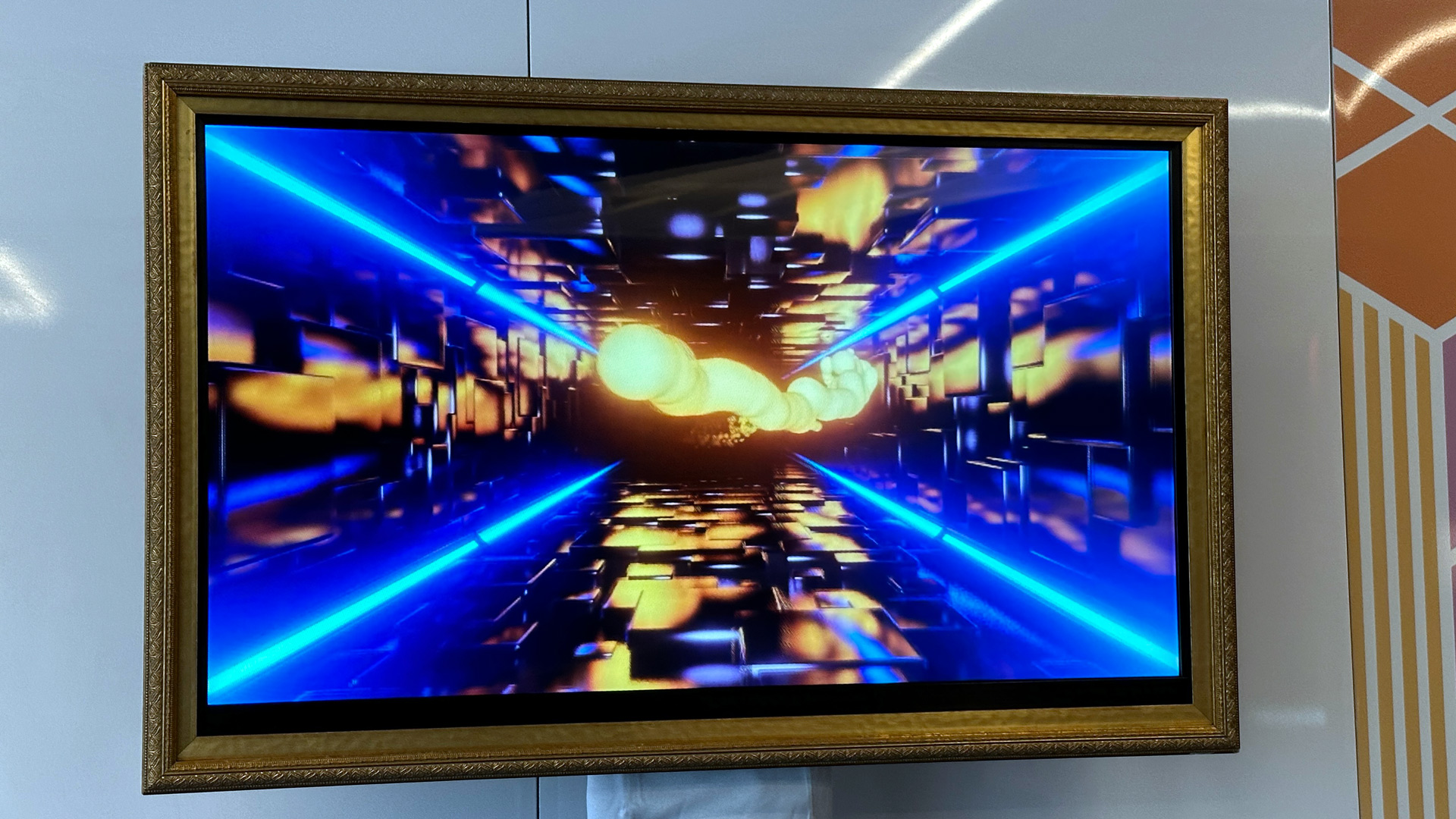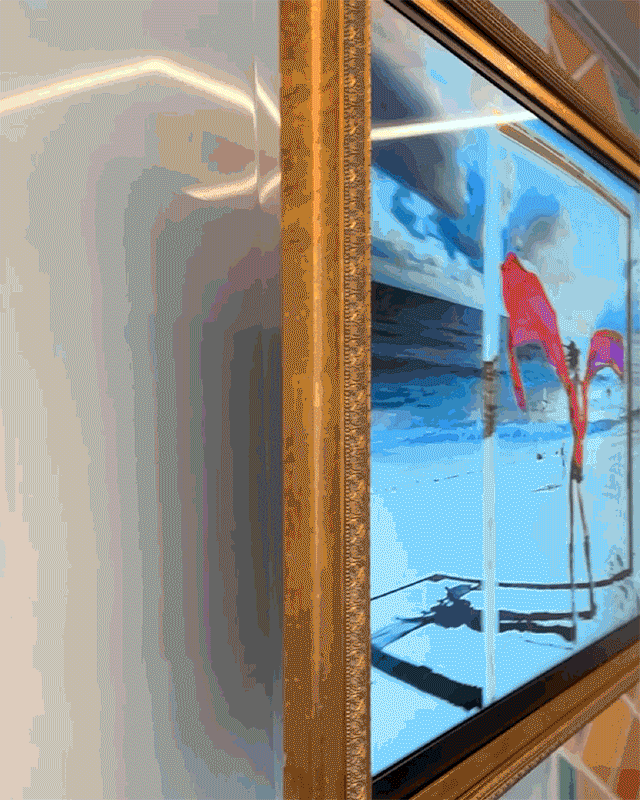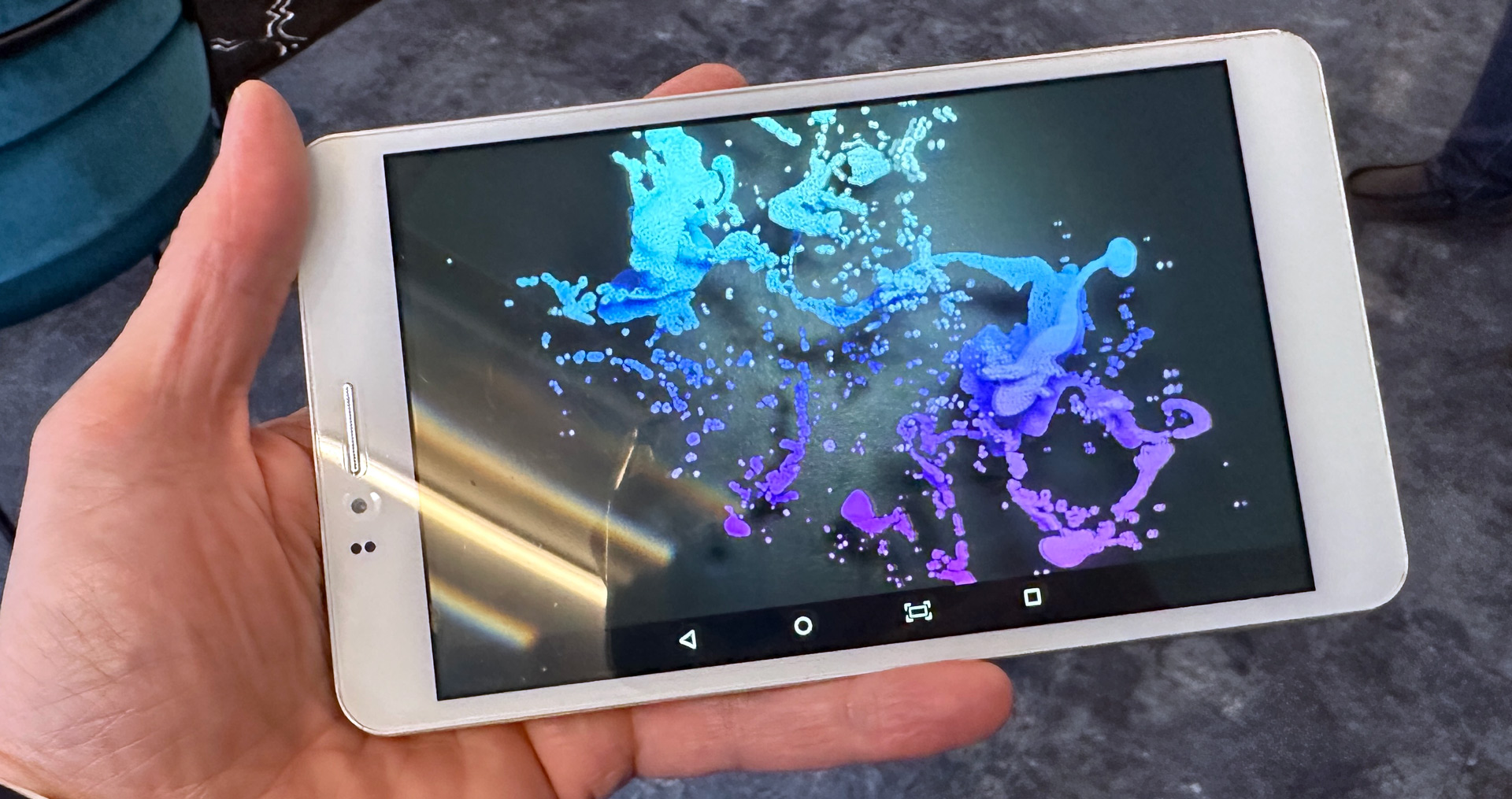I saw a 3D TV and it almost made me believe it could be a thing again
Magnetic 3D is impressive, glasses-free 3D TV

3D TV has an abysmal history, possibly only matched by 3D gaming (I see you Nintendo 3DS) but maybe it was the wrong technology at the wrong time. That's certainly Magnetic3D's hope as the company prepares to bring its glasses-free lenticular-powered 3D televisions to consumers.
Lenticular technology is one of the oldest forms of 3D image generation, one that goes back to those 3D postcards that could take a 2D image of Mount Rushmore and seemingly show you other angles of it as you moved from side to side.
Magnetic3D, which recently showed me a 55-inch glasses-free 3D TV, is using a far more sophisticated version of the display tech that, as Tom Zerega, Magnetic3D CEO & founder, and John Bracciante, company COO, told me, puts the typically vertical lenticular bands at a 45-degree angle and takes advantage of subpixels.
Seeing is believing
When I first encountered the TV sitting at eye-level on a pedestal, I didn't see any 3D effect. That's because I was viewing it from an extreme (beyond 140-degree) angle, but as I circled around to the front of the screen, the 3D imagery took shape. I saw fish, abstracts, basketball players, and a basketball that appeared to leave the boundaries of the screen (they did this nice effect using large black borders at the top and bottom of the image). It was, in a word, impressive.
There were artifacts in the 4K, roughly 80lb 3D TV. There's no eye-tracking here (future models may have it) so as my eyes moved around the screen, I could almost see the lenticular image degrading into disconnected image bands. But this was rare and most of it held up pretty well.
Bracciante told me the best viewing experience is between 8 and 15 ft away from the screen.

Magnetic3D has been selling its specific brand of 3D TV for retailers and commercial use but now it hopes to inspire consumers to come back to the 3D side. They're marketing sets that run from 43 inches to 65 inches, the latter being what I consider the sweet spot for modern consumer UHD viewing.
Get daily insight, inspiration and deals in your inbox
Sign up for breaking news, reviews, opinion, top tech deals, and more.
They also hope to sell the sets for $10,000, at the low end, and roughly $20,000 at the 65-inch level (prices include a custom frame and some 3D content to stare at). I'm not sure if Zerega or Bracciante noticed me blanch. The best TVs, think real cutting-edge models, often start in the $2,000 - to - $4,000 range. No one is ponying up $10,000 for a set.
We talked a bit about the history of 3D TV and how 15 years ago consumers showed an extreme lack of interest in buying sets marketed solely as 3D TVs, as opposed to TVs that offered, among many other things, 3D viewing capabilities.
Content, content, content
They didn't argue when I said one of the big hurdles, aside from price, would be content. Few are buying 8K TVs because there is no content. The explosion of 4K streaming content has no doubt helped propel the mass consumption of 4K TVs. Not only is there a dearth of 3D content, the only way you can currently get the right kind of 3D content on Magnetic 3D's set is via a USB stick. The company is working on an app.
All that said, something Bracciante said stuck with me. People could use these sets to show off their NFTs (non-fungible tokens, which are often pieces of digital art tied to unique tokens, and that can be bought, sold, and traded). I'm not into NFTs and think they're part of a crypto bubble, but I know many who love them, own them and, yes, even want to show them off.

If you look at Magnetic3D's expensive 3D sets as display centers for digital works of art and NFTs that you own, there might be something there. Granted, this is a niche market with money to spare (they bought NFTs, after all) but it is an avenue.
I don't know if anyone will buy these sets, but the imagery is exciting and unusual and for some, that might be enough.
Before I left, Zerega pulled a small tablet out of his pocket and handed it to me. I stared at the 7-inch display dumbfounded as purple blobs appeared to leap off the screen. It was one of the better glasses-free handheld 3D experiences I'd ever had, and I've been looking at 3D handheld technology for more than a decade. Zerega said this little tablet was the company's calling card and, I must admit, I kind of get it.

A 38-year industry veteran and award-winning journalist, Lance has covered technology since PCs were the size of suitcases and “on line” meant “waiting.” He’s a former Lifewire Editor-in-Chief, Mashable Editor-in-Chief, and, before that, Editor in Chief of PCMag.com and Senior Vice President of Content for Ziff Davis, Inc. He also wrote a popular, weekly tech column for Medium called The Upgrade.
Lance Ulanoff makes frequent appearances on national, international, and local news programs including Live with Kelly and Mark, the Today Show, Good Morning America, CNBC, CNN, and the BBC.